#pre-islam persia
Explore tagged Tumblr posts
Text
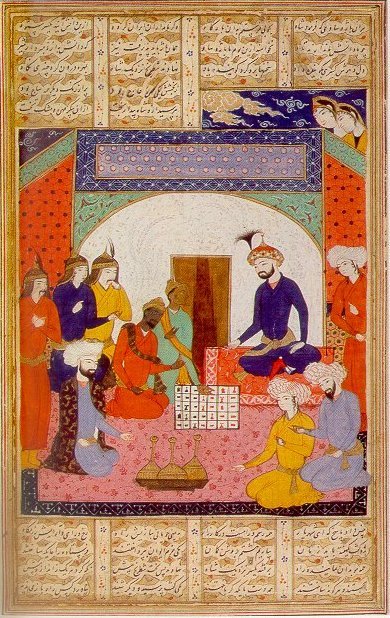
Persian manuscript describing how an ambassador from India, probably sent by the Maukhari King Śarvavarman of Kannauj, brought chess to the Persian court of Khosrow I.
The same scene from another manuscript.An illustration from a Persian manuscript "A treatise on chess". The Ambassadors from India present the Chatrang to Khosrow I Anushirwan, "Immortal Soul", King of Persia
From Wikipedia: https://en.wikipedia.org/wiki/History_of_Iran#/media/File:A_treatise_on_chess_2.jpg
#iran#india#iranian#persia#persian#chess history#chess#Maukhari#sasanian empire#sasanian dynasty#pre-islam persia#medieval#6th c. persia#6th century
6 notes
·
View notes
Text
10 Jewish Women from History Part 2
Shushandukht (4th to 5th centuries, Persia)
Jewish wife of a Sasanian emperor and mother of another. She was said to be the daughter of an Exilarch. She reputedly created the Jewish neighborhoods of Jouybareh in Isfahan and also communities in Susa and Shushtar. She is believed to be fictional by some.
Benvenida Abrabanel (1473-1560s, Italy)
A Sephardic philanthropist, banker, and businesswoman mentioned in literary, rabbinic, legal, and archival sources. Born to a prominent Spanish family, the Abravanel family, she received an education in both Jewish and secular subjects. Following the Expulsion of Jews from Spain in 1492, her family moved to Naples, where she became the tutor of Eleanor of Toledo. After the Holy Roman Emperor declared an expulsion of Jews in 1533, she co-protested and managed to get the order postponed by ten years. She and her family eventually moved to Ferrara. After her husband's death, she was made heir to almost all of his property, and she took over his business affairs, opening five banks in Florence.
Shlomtzion (1 century BCE, Judea)
A regnant queen of Judea, and the wife of Aristobulu I and Alexander Jannaeus. She ruled for nine years in the times of the Hasmonean dynasty. On his deathbed, Alexander trusted the government to his wife instead of his sons. She installed her eldest son as high priest and reestablished the Sanhedrin, and protected the Pharisees. Judea enjoyed much prosperity under her reign.
Licoricia of Winchester (1200s-1277, England)
An English Jewish businesswomen, described as the most important Jewish woman in medieval England. She was a moneylender, and appeared to have had a close relationship with King Henry III. She first appears in records from 1234 as a young widow with three sons and a daughter. In 1242, she married her second husband, who was known as the richest Jew in England. After her husbands death, she was detained by the king so that he could acquire part of her husband's estate; however, she repurchased his estate for 5,000 marks. Over the next thirty years after she was released, she became a highly influential businesswoman.
Esther Handali (?-1588, Ottoman Empire)
A Sephardic Jew reportedly from Jerez de la Frontera in Spain, she was married to a Jewish merchant who sold products to the Ottoman Imperial Harem. Due to the separation of the sexes, she would enter the harem as an agent for her husband. When she was widowed, she took over her husband's business. She was kira, or agent, of Nurbanu Sultan from at least 1566 onward, after Nurbanu became the favored consort of the sultan. She was trusted with political and diplomatic matters, including acting as intermediary between Nurbanu and Catherine de' Medici, as well as contacts in the Republic of Venice. She earned an enormous fortune, and was a benefactor to the Jews of Istanbul, especially widows and orphans and victims of the 1969 fire.
Esperanza Malchi (?-1600, Ottoman Empire)
A Jewish businesswoman in the Ottoman Empire and agent of Safiye Sultan. Reportedly from Italy, she acted as an agent for her husband, a Jewish businessman, in the Ottoman harem. It's difficult to separate her from Esther Handali since their careers overlap. Esperanza was trusted with political and diploamtic matters such as correspondence between Safiye and foreign powers, including the Queen of England.
Qasmuna (11th or 12th CE, Andalusia)
A poet from medieval Andalusia, and the only female Arabic language Jewish poet from the region. Three poems of her have survived. The most famous one is about how she looked in the mirror and decided she had reached the time of marriage.
Sarah of Yemen (6th century CE, Yemen)
A female composer of pre-Islamic Arabic poetry. She was potentially a member of Banu Qurayza, a Jewish tribe which lived in northern Arabia and was one of the major three Jewish tribes, along with Banu Qaynuqa and Banu Nadir.
Wife of Dunash ha-Lebi ben Labrat (920/925-after 985, Morocco or Spain)
Wife of a medieval Jewish commentator, poet, and grammarian from the Golden age of Jews in Spain. She is believed to be the author of a poem on Dunash's exile, making it the only known medieval Hebrew poem written by a woman.
Henrietta Szold (1860-1945, Baltimore)
Born in Baltimore, Maryland, she was the daughter of a rabbi and the eldest of eight daughters. Educated in Jewish studies, she edited Professor Marcus Jastrow's Talmudic Dicitonary, and attended lectures at Johns Hopkins and the Peabody Institute. She also studies at JTS, and studies in the rabbinic school on the promise she would not seek ordination, as the rabbinic school was restricted to males. A religious Zionist, she and six other woman eventually founded Hadassah, the Women's Zionist Organization of America. She funded hospitals, a medical school, soup kitchens, and other services for both Jewish and Arab inhabitants of Mandatory Palestine. In 1933, she immigrated there and helped run Youth Aliyah, an organization that saved 30,000 Jewish children during the Nazi regime. She also supported Brit Shalom, a small organization dedicated to Arab-Jewish unity.
#jewish#jewish women#jewish women's history#feminism#jumblr#there's so little history on Jewish women but for those that are recorded. they're badass.
12 notes
·
View notes
Note
i have a genuine question, what is arab colonisation? Is it a real thing? The context where I have read about it was a bigoted islamophic hindutvabadi page so I don't know if it's true or just part of their larger lie. Do you have any readings, sources on it?
According to Marriam Abboud Hourani, Arabization is a sociological process of cultural change in which a non-Arab society becomes Arab, meaning it either directly adopts or becomes strongly influenced by the Arabic language and culture. After the rise of Islam in Hejaz, there were a series of conquests in the Middle East and North Africa, after which the Rashidun Caliphate, the first Muslim empire was established. Arab culture spread through the Middle East and North Africa along with the spread of Islam, and in some places pre-Islamic religions and cultures were violently suppressed. These days, most Islamic countries have reconciled elements of their older traditions with Islam. The older religions survive among minorities in some places - Christians, Kurds, Ezidis and Mizrahi Jews for example and are still oppressed under some Islamic fundamentalist countries, like Iran.
Often, the term Arabization or Arab colonialism is used interchangeably with Islamic fundamentalism. On paper they mean entirely different things. However, in reality Islamic fundamentalists revere Arabic culture because the Quran was written in Arabic and events of the Quran are set in Arabia. The difference between the two is a slippery slope and I will let you decide on that.
The term colonization is such a red herring these days and is used to fit a lot of problematic narratives. It is a favourite with zionists, which is probably where these hindutvadis picked it up. And if you come across it on the internet I'd advise you to re-examine the source as they may have an anti-Muslim bias. That said, Islamic fundamentalism is very much a real thing and I wholeheartedly believe that any form of religious fundamentalism, and especially those fundamentalists that try to gain administrative and jurisdictional power for themselves, are a problem. All government and administrative bodies, across the world, should be compulsorily secular.
Now, in the context of South Asia, Arabization in it's strict meaning of the word, has nothing to do with our geopolitical history. Our Muslim rulers were all of Turkish, Afghan, and Central Asian origins with no connection to Arabia. Even culturally, elements of Indian Muslim culture can be traced back to Persia rather than Arabia; and linguistically the Persian influence on Hindi/Urdu is obvious. The term Arab colonization is often used by hindutvadis to mean the spread Islam in the subcontinent but of course they see the Islamic world as a monolith and I doubt they have the reading comprehension to know the difference even if they bothered to look it up.
Books:
The History of the Middle East by Peter Mansfield is a great place to start.
Islam, a short history by Karen Armstrong - very quick read + unbiased take on the Arab conquests.
The Arabization of Islam by Al Mubarak Nadir Shabaz
History of North Africa by Charles Andre Julien
From the holy mountain: a journey among the Christians of the Middle East by William Dalrymple
The Kurds: a contemporary history by Patrick S. Clancy
The Wretched of the Earth by Frantz Fanon for a general idea of colonization.
Mutuals if you have any other recommendations please feel free to add.
39 notes
·
View notes
Text

Our last dragon is Sarki from the mythology of the Hausa people. He appears in the Bayajidda legend.
According to this legend, Bayajidda is the prince of Baghdad, who is exiled from Persia and travels through Northern Africa until he reaches Bornu.
When he comes to Daura, he asks an old woman for water, but she tells him, that the serpent Sarki is guarding the well and only gives them water once a week. So Bayajidda went to the well and killed the serpent, and then he brought the old woman some water.
The next day, the people are wondering who killed Sarki. So queen Magajiya offers the dragonslayer half of the city, and shortly after, a bunch of men come with the heads of serpents, but none of them fit the body of Sarki. They don't find the real dragonslayer until the old woman tells them that her guest was the one who killed Sarki.
Bayajidda produces the head of Sarki and proves to be the real dragonslayer. Instead of half of the city, he wants to marry the queen, which she happily obliges to.
This story contains another typical element of dragonlayer stories, the false dragonslayer. Just like in most European tales, other people try to pass themselves as dragonslayers by bringing dragon heads, but only the true hero can bring the ultimate proof.
Sources:
Dierk Lange (1995), The Pre-Islamic Dimension of Hausa History, Saeculum, Vol. 46, Issue 2, https://doi.org/10.7788/saeculum.1995.46.2.161
Alasan Abdurrahman, Oral version of the Bayajidda legend in Dierk Lange (Übers.), Ancient Kingdoms of West Africa, J.H.Röll Verlag, ISBN 9783897541153
Ibrahim Yaro Yahaya (1988), Some Parallels in Unofficial Islamic Beliefs in Near Eastern and Hausa Folk Traditions, al-Ma'thurat al Sha'biyyah
Andre Salifou (1971), Le Damagaran ou Sultanat de Zinder au XIXe siecle, Centre nigerien de recherches en sciences humaines
Heinrich Barth (1853), Origin of the Hausa 'bokkoi' in P. A. Benton (1968), The Languages and Peoples of Bornu, Vol. 1, Psychology Press, S. 293-295, ISBN 9780714616353
David C. Conrad, Humphrey J. Fisher (1983), The Conquest That Never Was: Ghana and the Almoravids, 1076. II. The Local Oral Sources*, History in Africa , Volume 10 , S. 53-78, https://doi.org/10.2307/3171690, https://www.jstor.org/stable/3171690
8 notes
·
View notes
Note
hi! can I ask why you imagine ragnelle as persian?
Hello!
Truth be told, it actually stems more from her brother, Sir Gromer Somer Joure. He’s obviously the antagonist in The Wedding of Sir Gawain and Dame Ragnelle, but there’s another Gromer in The Turk and Sir Gawain, ie, the Turkish knight who challenges Gawain to a duel, and yet another knight I associate with him called Sir Grummore from Le Morte d'Arthur, who joins Agravaine and Mordred outside Guinevere's chamber door. (Nightbringer is a hater, all my homies hate Nightbringer.) So through developing Gromer into an Eastern knight, who has mysterious beef with Gawain, and ultimately aids his brother-in-laws with their schemes, Gromer and Ragnelle became Persian. It made sense to depict them as part of the Sassanid Empire, since I'm writing in a pre-Islamic era.
Plus, I just preferred dark haired Ragnelle in The Story of King Arthur and His Knights by Howard Pyle or in Merlin and the Sword (1985) over her blond appearance in Gawain by Gwen Rowley or redheaded portrayal in In Camelot’s Shadow by Sarah Zettel (and the sequels!). But I still recommend all those books!
Nearly my entire first book, The Moonlit Knight, takes place in Persia, as half the point of view is Ragnelle herself living in her home city with her family, including her brother, Gromer. Although, that's not their real names. ;^) So I've taken this concept and fully realized it there. Now you know!
#arthuriana#arthurian legend#arthurian mythology#arthurian literature#elegy of an empire#dame ragnelle#lady ragnelle#sir gromer somer joure#the wedding of sir gawain and dame ragnelle#the turke and sir gawain#the turk and sir gawain#le morte d'arthur#ask#anonymous
18 notes
·
View notes
Note
Your book is inspired by ancient persia. Do you know any stories from ancient persia that deserve more recognition?
Also are there any modern books about this culture? Primarily about pre islamic counties and culture.
Hello anon! Apologies for taking a month to reply to this, but when I received your message, I hadn't written the whole story yet and I wasn't sure how many elements I would include. Now that I have finished my first draft, I can let you know for sure!
The plot of my wip; The Other Evil, is based on the Greek mythology story of Hades and Persephone but many elements of Persian mythology are mentioned since most of the book takes place in Iran. Many of the Iranian characters presented are Zoroastrian, and that is another reason to delve into the figures of pre-Islamic Iran, who are still talked about by modern Iranians.
Rashnu and Mithra


I'd like to connect Raphael with Rashnu, the yazata of Justice and Truth, one of the three judges of the underworld. There are a few hints that people see Raphael this way.
In the book, we get to observe the festival of Mehregan, and here the yazata Mithra is mentioned. Mithra is also an Afterlife Judge, and his duties are correlated with the light and the sun, truth and contracts, harvest and cattle. He is more complex than that but I have little space to properly present him here.
The Amesha Spenta

Image of the seven Amesha Spenta with prophet Zarathustra in the middle
The Amesha Spenta are seven divine entities emanating from Ahura Mazda, the God and Creator of the world. There are mentions of them throughout the book. An example is the mention of Spenta Armaiti, who is related to the earth and feminity.
The Fravashis

In Zoroastrianism, the Fravashis are divine, spiritual entities who serve as guides and guardians of individuals, communities, and even natural elements. The Fravashis connect humans to the spiritual realm and aid in the cosmic battle between good and evil.
In the book, some consider Niruvei (a creature I created) to be fravashis, but the Niruvei do not necessarily believe this about themselves, or they are on the fence about it.
Chinvat Bridge and the Two Realms

Depiction of a person crossing the Chinvat bridge
The fate of the dead is decided when they reach the bridge of the requiter - the Chinvat bridge. Crossing it will bring them either to the abode of light and song (house of song/praise/merit), or to the fall into an abyss of darkness, evil, and deceit (house of lies/abode of liars). In the House of Lies they will wait for the end of the world.
In Raphael's House there is the part which stands on the earth, and another part which is underground. The fate of people in each part is like the one in the House of Song, and the House of Lies underneath.
Mazanderan province and Divs

It's not confirmed that this is the same distant mythical area where heroes like Rostam go to fight Divs (demons) but that area had the name "Mazanderan" as well. Many modern people consider this to be the same, or overlapping area, so I wanted to play with this belief a little.
In the high mountains of Mazanderan live many Isior, a creature of my creation who eats Humans and has claws, large teeth, and talons. My main character, Ismene, would be considered a monster or a demon in this context.

Hero Rostam fighting the Divs
From that same area, it is said that the mythical hero Arash determined the limits of Iran by shooting an arrow.

Zahak - Fereydun - Mount Damavand

Fereydun defeats Zahak
After hero Fereydun defeated the snake wizard Zahak, he chained him in a cave within mount Damavand. When the time for the renovation of this world begins, Zahak will burst his bonds and ravage one-third of humanity and cattle.
Kind Hushang and the discovery of Fire

As the festival of Sadeh happens in the story, we hear about how King Hushang discovered fire. The King was walking in the mountains when he saw a black serpent and threw a stone at it. The stone missed and struck another rock instead. The impact caused sparks to fly, igniting a fire. Hushang recognized the fire as the divine gift it was, and declared its sanctity.
Jamshid, immortality, and the end of the world

Jamshid The Great, or Yima, was a legendary king. During his rule he invented the sciences, medicine, the arts and crafts, and introduced the Iranian New Year Novruzh. It is said he established the first Golden Age in Iran. Ahura Mazda gave him the power to reign over the angels and the demons, as well as a seven-ringed cup filled with the elixir of immortality, which allowed him to live long and observe the whole Universe through it.
But as Jamshid and the world got corrupted after a few thousand years. Then, the Creator decided to destroy part of the world with a deadly winter and frost. With God's directions, Jamshid created a huge cavern where humanity waited until the snow melted, and the waters left the land.
There is a conflict about immortality in my book. Jamshid's cup serves as a potentially historical reference for it.
Recommended books and resources:
There's a multitude of books about pre-Islamic beliefs of Iran. In my bookcase I have "Persian Myths & Legends: Tales of Heroes, Gods & Monsters by Shayani Sahba", and "Persian Myths & Tales: Anthology of Classic Tales" by Christine Ruymbeke. You can also visit eranshahr.com to learn about all the kinds and creatures of Persian folklore!
*** If there are any inaccuracies in the myths presented above or if I phrased something wrong, please message me and let me know so I can fix them!
4 notes
·
View notes
Note
I tried to appreciate LoK, to go beyond the stereotypical American 1920s aesthetic, to not even try to create a unique aesthetic suitable for that fascinating fusion of Asian, Amerindian and European cultures typical of that Universe, but... I couldn't. That is: the romantic relationships are unrealistic and poorly written (more than in original show, when they were realistic but written badly, cause the useless "shipping" where crack ships are possible like canon ships, and I admit of being part of the problem), and a lot of characters go from one transformation to another in an excessive and almost unnatural way, erasing any form of character development (like Korra who if If it had been well written I would have appreciated it), and this is when they have a character (Asami isn't a real character)! And those who say "this is how people act in reality, this is how love relationships work in real life"... if you are Americans, I inform you that half of your fellow citizens use psychotropic drugs. Clear proof that many people have problems.
I'll leave it up to you how to interpret my words about "acting real."
But in the end, one thing I hated the most, and I'm not just talking about LoK but also about comics, and this heck of post-apocalyptic sequels (in a period in which post-apocalyptic no longer attracts, but probably Di Martino thinks he is still in the 80s, when he was still a kid), is the continuation of a flaw that was also partly present in the original series: the reduction of the cultures and religions of Asia to Buddhism, the Chinese and Japanese Mahayana fused with Tibet's lamaism, with at most Shintoism fused with the American and Altaic of animistic visions .
But Asia is much larger and richer. Just speaking of peoples, there are the Turks such as Kazakhs and Uzbeks, or Iranian populations such as Tajiks, Pashtuns, Baluchis, and the Arab populations of Persia and India, the Mongolians, or the Austronesian populations of the Philippines, of the Indonesian islands, of Borneo, of Malaysia; and this obviously without mentioning Vietnamese, Khmer, and that universe of cultures of so-called India, from Indo-Aryans such as the Hindis to the Dravidian populations and pre-aryans like the Tamils.
And then the religions: between Mongolian and Turkish Tengrism, Mazdaism in India and China with its influences on Buddhism, Indian Jainism and the visions that precede Buddhism, Jainism and the like, which derive from the Hindu śramaṇa. Not to mention my two favorite religions in Asia, namely Islam and Syriac Christianity. The latter arrived in China as early as the 5th-6th century AD, forming the first communities called Hui and which flourished under the Tang Dynasty. And without talking about the Malabarian Churches in India, prior to the arrival of the European Jesuit missionaries. And let's not talk about Islam, with its Iranic, Turk, Indian and Chinese Sufi Confratenities, Chinese Islam is also very present in areas such as Martial Arts, in the case of Baijiquan, developed by a Muslim general (and which, if I'm not mistaken, partly influenced Firebending movements, particularly Azula's, creating my figure of a "Sufism-themed Azula's Redemption Arc" with the company of Haru as in some famous storyboards; especially since Islamic ascetics could continue to work, marry, and were often also warriors, as in the case of the "first Sufi", Abu Da'ur Al-Ghīfarī, who is among those dearest to God, together with those who pray after a hard journey and those who give alms without having interests, he put "who fights until Victory").
But no: we have a mediocre fake-buddhism with western sauce, and the stupid incoherence called Raava and Vaatu, a fusion among Mazdean Dualistic view and Chinese Yin and Yang. That's because Konietzko and Di Martino are agnostics or atheists, and probably they believed themselves to be "deep in their knowledge" and that "religions are for moron".
X
4 notes
·
View notes
Text
Dastangoi: The Art of Storytelling
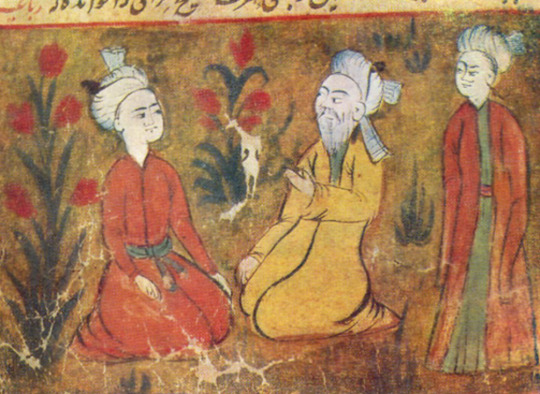
Dastangoi is an Urdu storytelling art. Derived from Persia. Dastangoi is performed by one person who's referred to as a Dastango, the word for storyteller. Stories are referred to as Dastans. Dastan means, tale or story and the suffix -goi makes it a verb. Hence, Dastangoi translates to "to tell a story"
Dastangoi had it's origins in pre-Islamic Arabia and moved onto Iran and then the North Indian cities of Delhi and Lucknow in the 18th century.
It was very popular in Lucknow, across all classes of people and in public and private. It was done in the streets, in homes and even opium dens. Many people saw Dastans as a key part of the the experience in an opium den
Some people, who were particularly rich would hire Dastangos to entertain their clients and friends. These stories would come under themes such as, war, pleasure, beauty, love and deception.
Dastangoi enjoyed a revitalisation in India in 2005, which seemed to have stemmed from Mahmood Farooqui
13 notes
·
View notes
Text
Hindustan, India, where do the names come from, why? Why does the world use them?
Well, let's look first at other countries like Japan (Nippon) - Land of the Rising Sun or where the Sun Rises. This is what Japan's always called itself.
Others, over time, language, translation led to, and made stick, Japan. It's like how Germany is actually Deutschland to themselves, technically. This is what's known as an Exonym, or name given/used by other people/country outside the one being referenced. This is led to creation of myths, stories, fairy tales, and more about cultures as well. Back to India.
Well, the original people behind the connection to the name are best known as the Indus Valley people/civilization.
But that's not what they were called amongst themselves. No. In fact, these people who originated and farmed the Sindh valley/Sindh river, were first given their eventual "Indus related" name but the Persians.
When the Persians first started interacting and trading with the people we know as Indus Valley, they referred to them as the people of the Sindh river or valley, however, in their native tongue, the S became an H.
So the Hindh valley, Hindh people. Eventually the greeks and romans would show up, and call them the Indos, or Indus people for the river (as translated into their tongues...remind me again how many river based names there are again in the world, even for.....just river itself) go figure. Because people usually fucking set up near rich fresh water sources cuz... we need it to live. That's why people set up along the Nile too. And...well, everywhere. Water kinda important.
The Indus valley people were not Hindu as we know it today. In fact, at one point, they practiced a religion older than the vedic, we just don't know what that is do to proto indo european influences and the impact they had in forming the vedic era pre Hindu.
Continuing. Now we reach the eventual evolution of Hindhu through the word and alteration of Sindh/Sindhu people - of that river/past it.
Stan. Well, in Sanskrit there is sthāna - or place. And in Persia, there is stan (a suffix you see in many Islamic countries as well given the evolution of the language), and the similarity in sanskrit and ancient persian is likely because of PIE influences in both of them so, outside countries started using interchangeably (and of course eventually so do the people within an empire when you're trading and referring to yourself and building alliances, agreements or going to war) you adopt those terms: Hindustan, or India. But Hindustan was never meant to be the land of the Hindu (in terms of religion) because it was a given name by the river, and we're talking about the vedic religion.
Now, I left one name out of here, because it is specifically NOT an exonym. It's the name India historically identifies with from within its own epics, including the most well known, Mahabharata (romanized/english) said closer to (god it's hard typing these sounds in freaking english): Mah-bharat.
Bharat is the key there. So, what's it mean?
Well, it's important to note the word first comes from Bhāratavarṣa - which comes from the Vedic people Bharatas - who are first mentioned in the Rig Veda.
They are the principle people who come from Aryavarta - land of the Aryans, which is why the word is still word in Indic languages, and even a used name. Like, it's a used name for real. You'll meet guys called Aryan.
Anyways, continuing. So, the oldest known name for Indian proper, and you might if you pay attention to Indian news see this making a comeback, is Bharat.
To many from the outside, it's come off heated, people are unsure why, and so on for the name change. But honestly? It's just what India was once called. It's no different than when Mumbai replaced in name Bombay. That name, Bombay was given by the Portuguese. Later (I can't recal the year, someone comment it) the Indian government decided to change the name and reclaim it to Mumbai. But someone asked me about this recently like why all the Bharat stuff and talk online in places.
For anyone who's seen it and wondered, I hope this helps.
It's a history of language, names, and other people sometimes making names stick and translation and evolution of words and culture and empires.
Closing with how did India come to stick? Latin. Then everyone who inherited the legacy, evolution of the language, and the love - all the romance languages that built on it. Eventually, by the 16th or was it 17th century, most of the world started calling it India when they
traded, colonized more, w.e.
The Latin transliteration of Indos, Indica - India.
But the term was used sort of before.
Herodotus in his writings mentions the Indus people, and then calls on of them, "An Indian."
But, yeah, it was never a name for/from those the land themselves.
#Hindustan#India#Japan#Nippon#The Land of the Rising Sun#language#translation#Exonym#Indus Valley#Persians#Hindh Valley#Indos#Indus#Sindh#Sindhu#Bharat#Aryavarta#Older names#ancient names#How india got its name#history of language#history of names#names have meaning#what's in a name#evolution and culture#they didn't name themselves#this is what they were called#new facts#learn something new#did you know?
2 notes
·
View notes
Text
'Luxury Foods' in Medieval Islamic Societies by David Waines from World Archaeology, Vol. 34, No. 3, Luxury Foods (Feb., 2003)
"We may begin with the work entitled The Meadows of Gold written by the famous historian al-Mas'udi (d. AD 956). He was born in Baghdad and died in Cairo, having, in between, travelled widely in Persia and India in addition to Iraq, Palestine and Syria. The Meadows of Gold contains a number of anecdotes related to food. One involves the Abbasid Caliph, Harun al-Rashid (d. AD 809), of 1001 Arabian Nights fame. He was invited to dine by his brother Ibrahim b. al-Mahdi (d. AD 853), a noted poet and culinary expert, of whom more later.
Harun was served a dish of what appeared to be small and delicate slices of fish arranged in the shape of a fish. When informed that the dish was made from more than 150 fish tongues, the Caliph demanded to know its price and commanded that an equivalent of 1000 silver dirhams be distributed to the poor. This was in expiation, he said, for his brother's wastefulness. Moreover, he ordered a servant to take the fish on its plate, itself an expensive item worth five times as much as the fish preparation, and give it to the first beggar he met in the street.
A second anecdote involves another Caliph, al-Mutawakkil (d. AD 861), who was relaxing one day with his courtiers and singers beside one of the many canals that traversed Baghdad. He smelled the aroma of cooking drifting from a pot being prepared by a sailor on his boat. The Caliph ordered the pot - a beef sikbaj, a sweet and sour stew dish, brought immediately to him. The Caliph sampled the stew with a piece of bread, as did his courtiers and singers, until the pot was empty. He then ordered the pot filled with 2000 dirhams and returned to the boat; the coins that did not fit into the pot were placed in a pouch and given directly to the cook. In the Caliph's judgement the dish was the best sikbaj he had ever tasted."
I found this excerpt incredibly lovely and highly recommend you check out the whole thing on JSTOR (free to access when you make an account but also on scihub). Doing a short article review on it for my Global Connections module - covering Islamic history briefly has really touched me especially when I covered it quite begrudgingly as a child/pre-teen through Saturday-Sunday school. It was always a tug of war with my mother to make me go until at 16 I finally just refused outright and there was nothing she could do. Admittedly out of all the classes taught at the mosque Tahrikh and Seerah always engaged me. I'm glad I can revisit it with a warm heart and with no expectation to be something I'm not so I can love share and appreciate it with fresh eyes.
#palestine#palestinian history#arab history#history#medieval history#islamic history#islam#iran#iraq#india#syrian history#syria#iranian history#indian history#sikbaj#food history#culinary#culinary history#world trade#global trade#medieval trade#spice trade#pbuh#university#london#hospitality#islamic empire#jstor#history of food
11 notes
·
View notes
Text
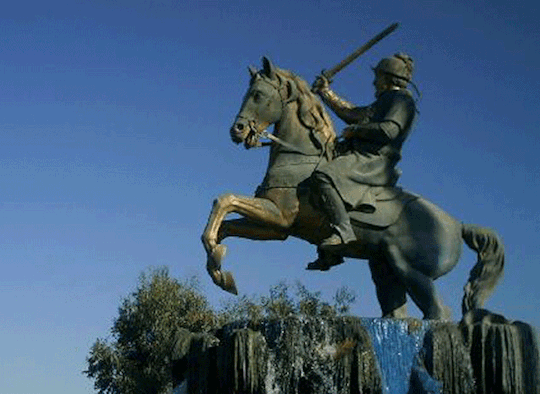

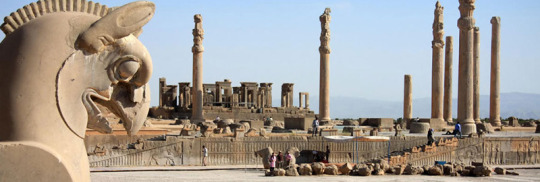
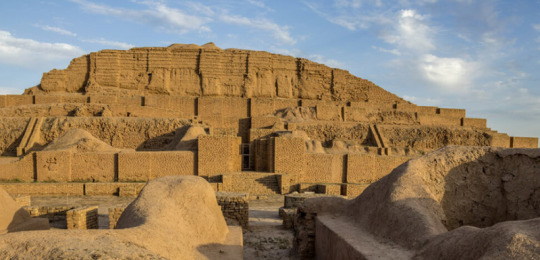
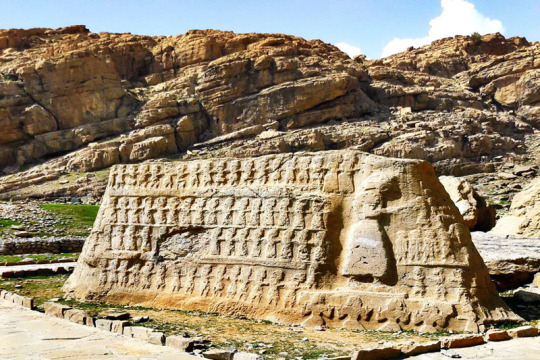
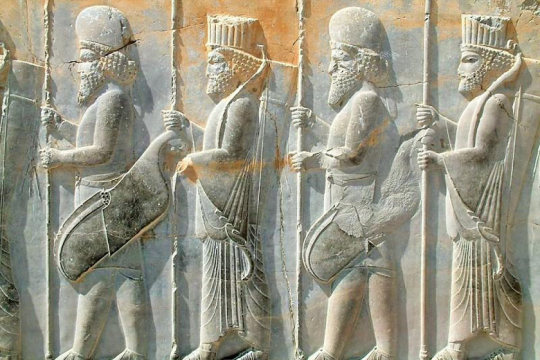
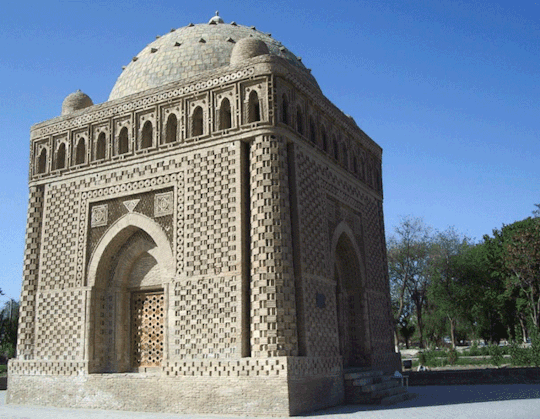


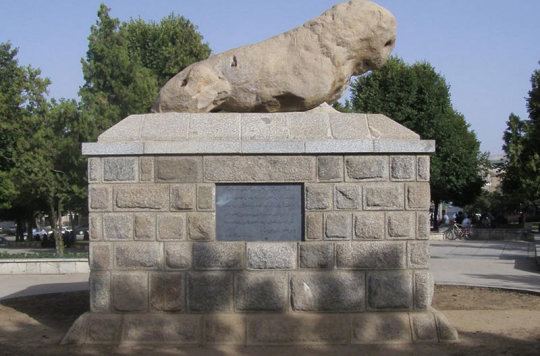
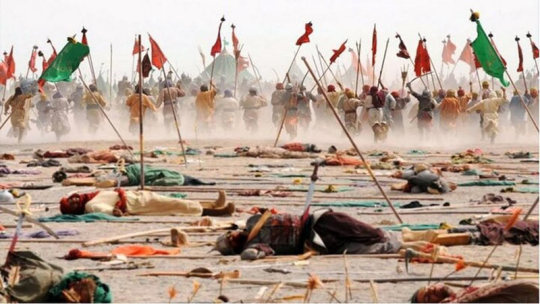
Who was the founder of the first central government in Iran? The founder of the first central government in Iran dates back to the Achaemenid period by Cyrus the Great. Achaemenid Cyrus was crowned in 550 BC and established the first central government in Iran.
The origin of the name Iran The country of Iran was not called "Iran" from the beginning and was known by the names of Persia, Pars and Pers among others. Saeed Nafisi suggested the word "Iran" instead of "Persia" in January 1313 AH. The naming initially caused opposition. Because the politicians considered "Persia" as an international name that was familiar among all types. The supporters of this naming also considered the term "Iran" as the best name to describe the political authority and cultural background of this country.
In 1314 AH, based on the circular of the Ministry of Foreign Affairs of Iran and the request of the then government of Reza Shah, the word "Iran" was officially used to name the country and replace other names. Professor Arthur Upham Pope, an American Iranologist, writes in the book Masterpieces of Iranian Art translated by Parviz Natal Khanleri: The word "Iran" was used for the plateau and geographical functions of Iran in the first millennium BC.
According to Mohammad Moin, the great Iranian writer, the origin of the word "Arya" is so clear that the eastern part of Indo-Europe considers themselves proud of this name. Indo-Iranian common ancestors also introduced themselves with this name and named their country as "Iran-Oejah".
Pre-Islamic era in Iranian history The pre-Islam era, which includes various events in the history of Iran, includes the time period before the arrival of the Aryans, that is, the rule of Elam until the end of the Sassanid rule and the arrival of the Arabs in Iran. According to historical sources, before the Aryans entered Iran, the Elamites lived as a native dynasty in the Iranian plateau.
The Elam dynasty was formed in the southwestern region of the Iranian plateau around 3,000 years BC, and they named their territory "Hatmati". The rule of Elam expanded during the period of the famous kings of this dynasty, and they dominated parts of Mesopotamia (Mesopotamia) in addition to southwestern Iran.
Whenever the Elamites gained more power, they played an important role in the Middle River politics. They overcame Sumer around 2,000 BC and completely subjugated the Mesopotamia. Historians divide the political history of Elam into three periods:
Ancient Elam, Middle Elam and New Elam
The migration of Aryans to the Iranian plateau
In the third period of the rule of Elam, the Medes, as a group of Aryans, established their power in the northwest of Iran and took control of that part of Iran. The Parthians (Ashkanians) and the Persians (Achaemenians and their successors, who were called the Sasanians) were two other Aryan tribes who formed a government in the Iranian plateau after the Medes. There are many theories about the ethnicity, race and migration of Aryans and their entry into Iran, which are the source of disagreement among scholars and have not yet reached a single conclusion about them. Some consider Siberia as the origin of Aryans and believe that they entered the Iranian plateau from there.
The post-Islam era in Iranian history
Yazdgerd III, the last Sassanid king, was defeated by the Arabs and left Iran to them. "Rostam Farrokhzad" was defeated by the Arabs in the battle of Qadisiyah (636 AD) and lost his life despite his bravery. He organized his forces and was defeated by the Arabs in the war that took place in Nahavand (642 AD). Yazdgerd fled to the East with his family and was killed near Merv. With the death of Yazdgerd III, his empire fell in 651 AD.According to the book "Two Centuries of Silence" by "Abd al-Hossein Zarinkoub", some Iranians were not satisfied with the arrival of Arabs in the country and continued to adhere to the Zoroastrian religion. Zoroastrian Iranians paid tribute to music during this period. According to Zarinkoob, Iranians do not accept Islam with open arms and during this time, they were fighting with the Arabs in the corners and sides of Iran in order to advance them. On the other hand, Shahid Motahari criticized Zarinkoub in his book "Mutual Services of Islam and Iran" and did not consider his opinion to be scientific. He believes that Iranians accepted Islam with open arms.
The land of Iran gradually surrendered to the Arabs and only Tabaristan and Gilan maintained their independence by resisting. During this period, government powers did not rule in Iran and local governments have power in some parts of Iran.
The domination of Arabs over Iran caused their culture to be revealed in Iran, and with the beginning of independent Islamic governments in Iran, the Hijri lunar calendar, the foundations of historians in writing the history of Iran, was published.
contemporary history
World War II brought chaos to Iran and Reza Shah resigned from the throne. Mohammad Reza succeeded his father in 1320 AH (1941 AD). The creation of the 14th Parliament, the nationalization of the oil industry, the withdrawal of Soviet forces from Iran after the end of World War II, the August 28 coup, the Baghdad Pact, and the formation of the Iranian National Front were among the most important events of this period.
With the formation of the Islamic Revolution in 1357 AH (1978 CE), the life of Pahlavi rule ended and the Islamic Republic replaced it.
12 notes
·
View notes
Text
i enjoy absolute freedom every day i have a bed to sleep on a toilet to shit in and a statutory right to a place within walls and roof to protect me from the increasingly cold weather i can choose what to eat and how to dress and im studying for my desired profession whilst deepening the knowledge in my personal interests (for free) no one can force me to become their in house sex slave maid or the mother to their children i can pick up books without fee from the library i can take a walk in the park or through the natural reserve i can go swimming i can do a pilates routine on youtube i can read every entry on the stanford encyclopaedia of philosophy i can delve into a wikipedia rabbit hole on pre-islamic religious practices in greater persia i do not only have enough money to satisfactorily cover my basic needs but i also have a lot left to spend on all the things i don’t require to live but the things that gild my existence so much despite their meaninglessness. i feel immense gratitude.
3 notes
·
View notes
Text
Prince of Persia The Lost Crown Immortals Showcase Nr#3: Artaban, The Calm & Brooding Sword-Master!!!

Hello everyone, I am here once again to introduce here the third Immortal from the upcoming new title in the series called Prince of Persia, The Lost Crown! Today I will show you a true warrior at heart with a kind and gentle soul, this warrior's name? Artaban!
Artaban is a sword-master, but he is also competent in the arts of patience, virtue, diplomacy and preparedness that, in his case, is actually over-preparedness.
His sharp mind and big heart makes him an invaluable asset to the Immortals, who all could learn from his wisdom in battle and beyond, especially Sargon, who would need to take a few steps back and learn from the best, especially about diplomacy and peace!
A really great thinker and fighter, he really believes strongly in the Zoroastrianism.[The former predominant fate of Persia until Islam replaced it. It still exists as a religion today in much smaller numbers around the world and, amongst other things, views life as a battle between the good god Ormazd/Ahura Mazda and the evil god known as Ahriman/Angra Mainyu...which kind of is like with in Islam with Allah and Shaitan...but this isn't a religion session, so take it as a rather brief summary here] A faith that shaped his virtues personality and could make him in addition to his other traits, a Zoroastrian paragon!!! A Holy Warrior fighting for Ormazd and his Kingdom of Persia!!!
He is also fond of making outside of battle and pre-combat poems that will touch your heart with the sweetest of poems, but only if you are lucky to see it!!!
His big sword is a large testament to his fighting prowess and his big cerebral approach to combat (and life) allows it to be put to good use! Artaban show us, that the size of a warrior's sword tells us a lot about the size of their heart!!!
He really is that type of Paragon!!! The pinnacle of heroism!!!
Will Artaban be a good example to his Immortals and lead them to the road of justice, or will all fall down in the domains of darkness and perish forever? Find out in The Lost Crown, the next Prince of Persia game, coming in 18th January and before, on 11th January the same month as free demo on the Switch, Xbox One/Series X|S, PS4/5 and PC!!!
Stay tuned for more, cuz tomorrow, you will see more Immortals coming to the mix, just before the demo!!! Bye and have good luck on your journey!!! See ya!
As an interesting trivia...on Twitter has the official's game account revealed that after 2 hours, Sargon ravishes the enemies now with little diff...wanna check that out here:
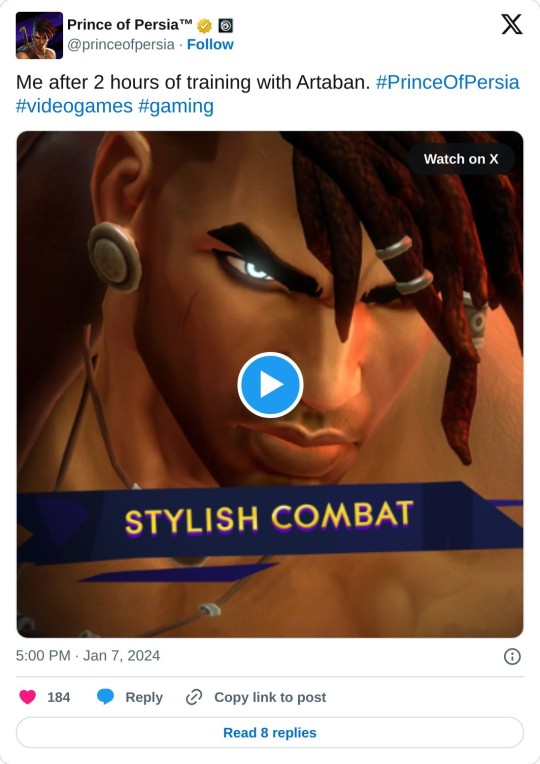
#star arcana revelations#prince of persia#the lost crown#artaban#sargon#immortals showcase#prince of persia twitter#big swords = big hearts
7 notes
·
View notes
Text
Mythic Creatures by Region & Culture
Part 8: Asia and South Pacific
The Mesopotamian entries are often culture-specific and I'll need to sort them into their respective regions in future.
allegedly Asian
Barometz; Salamander
Smaller Entries:
Akathaso, Burma, tree spirit; Barmanou, Pakistan; Benzaiten; Churel; Creatures of Azerbaijan; Dab Hmong; Dakhanavar Armenian; Ḍākinī; Death; Landlord Deities; Mountain God; Peacock Princess; Sin-you; Sky Fox; Teng; Tenghuang; Xeglun Tungusic Ainu
Akkorokamui; Amemasu; Hoyau; Kenas-unarpe; Korpokkur; Mintuci Cambodia; Koan Kroach nightmare fuel; Kting voar also Vietnam; Mrenh kongveal
China
Ao; Ao Guang; Azure Lung; Bai Lung Ma; Bai Suzhen; Bai Ze; Bao Si; Bashe; Bi Fang bird; Bixi; Black Tortoise; Boto_and_Dolphin_Spirits; Cangjie; Chang; Chi; Chinas; Chinese guardian lions; Chinese Monkey Creatures; Chinese serpent killed by Li Ji; Chinese Souls; Chiwen; Chiyou; City God; Daji; Dēnglung; Dilung; Diting; Dogs in Chinese mythology; Dong Yong and the Seventh Fairy; Dǒumǔ; Dragon turtle; Fangfeng; Fangxiangshi; Feilian; Feilung; Feng; Fènghuáng; Fengli; Flying Horse of Gansu; Four Perils; Fox Spirit; Fuxi; Fuzanglung; Fuzhu; Gangcheori; Ghosts in Chinese culture; Gonggong; Guang yi ji; Hairen; He-He Er Xian; Hong; Hòutǔ; Hun and po; Hundun; Huodou; Húxiān; Jiangshi; Jiaolung; Jin Chan; Jinmenju also Japanese; Jiutian Xuannü; Jiutou Zhiji Jing; Jiuweihu; Jué yuán (Japanese version Jueyuan); King Father of the East; Kitchen God; Kuafu; Kui; Lake Tianchi Monster; Luan; Luduan; Lung; Lungma; Lungmu; Magpie Bridge; Magu; Menshen; Mo; Mogwai; Momu; Moon Rabbit; Nian; Nine-headed bird; Nüba; Nüwa; Pangu; Panhu; Panlung; Peng; Penghou; Pig Dragon; Pipa Jing; Pixiu; Pulao; Qianlima also Korean; Qilin; Qingji; Qingniao; Qiulung; Queen Mother of the West; Sanshi; Sha Wujing; Shangyang; Shen; Shen_clam_monster; Shenlung; Shi Dog; Shuimu; Spirit Turtle; Stone Sentinel Maze; Swan Maiden Yao; Taotie; The Governor of Nanke; The Painted Skin; The Nine Peahens and the Golden Apples; Three-legged crow also Japanese and Korean; Tianguo; Tianlung; Tianma; Tu'er Shen; Tubo; Tudigong; Unicorn; Watersheep (see Vegetable Lamb of Tartary); Vermillion Bird; Wangliang; White Tiger; World Turtle; Wutong Shen; Wuzhiqi; Xian; Xiangliu; Xiao; Xiezhi; Xingtian; Xirang; Yao Grass; Yāoguài; Yellow Lung; Yeren; Yeti also Tibetan and Nepali; Yinglung; Zhenniao; Zhu Bajie; Zhulung
Hittite
Annunaki; Illuyanka the equivalent of Hurrian Ḫedammu; Hittite Goddesses of Fate
Hurrian
Annunaki; Ḫedammu the equivalent of Hittite Illuyanka; Tilla; Ullikummi; Upelluri
Iran (Persia)
Akvan Div; Al but also in Mongolia, Russia, Afghanistan, Caucasus; Almas also Turkic and Mongolia; Anguiped also Greek and Roman.; Arzhang Div; Azhdaha; Chamrosh; Div; Div-e Sepid; Fulad-zereh; Gochihr; Griffon; Huma bird; Karkadann allegedly lived in India and Persia; Manticore allegedly lived in India; Peri also Turkic, Islamic (and Indian?); Rakhsh; Shabrang; Shahbaz; Shahmaran Indo-Iranian and Turkic; Shahrokh; Sheshe; Simurgh; Sphinx in a wide sense; Takam; Tyger allegedly lived in Persia; Unicorn; Vegetable Lamb of Tartary the Chinese watersheep allegedly lived in Persia; Werehyena; Winged Unicorn; Zahhāk
Java
Antaboga, pre-Islamic, Hindu; Kakawin; Keong Emas; Wewe Gombel Korea; Bulgae; Chilseok; Dokkaebi; Dokkaebi bangmangi; Egg Ghost; Gasin (house god); Gunungsin; Gwisin; Haesindang Park; Inmyeonjo; Jihaguk daejeok toechi seolhwa; Korean dragon; Korean Virgin Ghost; Munshin; Namu doryeong; Pulgasari; Qianlima also Chinese; Ryong; Samsin Halmeoni; Seonangshin; Sosamsin; The Heavenly Maiden and the Woodcutter; Three-legged crow also Japanese and Chinese; Ungnyeo; Ureongi gaksi;
Mongolia
Al but also in Persia, Russia, Afghanistan, Caucasus; Almas also Iran and Turkic; Aq Bars, winged snow leopard, heraldry from 800s onwards, also Slavic; Mongolian Death Worm Myanmar; Manussiha; Nat; Nawarupa; Pyinsarupa; Sphinx in a wide sense; Thayé; Yokkaso
Nepal
Gurumāpā; Khyāh; Kichkandi; Lākhey; Murkatta; Yeti also Chinese and Tibetan
Philippines
Alan of the Tinguian people; Amalanhig of the Visayan; type of Aswang; Amomongo of the Visayan; Angalo of the Ilocano; Anggitay Philippine centauride, female Tikbalang; Anito; Aswang; Bakunawa; Bal-Bal; Batibat of the Ilocano; Berbalang of Mindanao towns; Berberoka northern Luzon; Bernardo Carpio; Bungisngis Meluz, Orion, Bataan and Batangas; Busaw; Buso Bagobo; Dalaketnon Cebuano; Ekek; Engkanto; Ibong Adarna; Kapre; Kataw; Kumakatok; Manananggal; Manaul; Mandurugo; Minokawa; Nuno sa punso; Philippine Mytic Creatures; Pugot; Sarangay; Sarimanok; Sigbin; Sirena; Siyokoy; Tigmamanukan; Tikbalang; Tiyanak; Wakwak
allegedly Scythian (rider culture, no written records, all inhabitants and creatures based on Greek reports)
Amazons, Amazons (List); Arimaspi north Scythia; Scythian genealogical myth; Scythian religion; Scythians; Tarand; Vegetable Lamb of Tartary
Taiwan
Hanitu; Mo-sin-a; Ta'ai; Tek-ko-kui
Thai
Apsonsi; Cha kla; Hatsadiling; Hemaraj; Kong Koi; Krahang; Krasue; Kuman Thong; Mae Nak Phra Khanong; Mae yanang; Nang Mai; Nang Ta-khian; Nang Tani; Nariphon; Ninlaret; Phi phong; Phi Tai Hong; Phisuea Samut; Pop (ghost); Sphinx in a wide sense; Sudsakorn; Suvannamaccha
Tibet
Gyalpo spirits; Ro-langs; Simhamukha; Snow Lion; Tibetan myth; Wind Horse; Yeti also Chinese and Nepali
Vietnam
Hồ ly tinh; Kting voar also Cambodia; Lạc bird; Nghê; Rồng ; Vietnamese Dragons
Turkic
Äbädä, also found in Siberian mythology; Abasy, also found in Siberian mythology; Aiy Yakut; Al in Mongolia, Russia, Afghanistan, Caucasus; Al Ana; Al Basty from Sumerian; Alara, also found in Siberian mythology; Almas also Iran and Mongolia; Archura; Asena; Ayaz Ata; Bai Baianai also Yakut; Basty Turkic alp or mare; Bichura Turkic household spirit; Chai nenesi; Chesma iyesi; Çor also Siberian; Ergene iyesi; Erkenek; Hortdan; Irshi; Itbarak; İye; Konrul; Korbolko; Kormos; Mhachkay includes Tatar lore; Mu shuvuu; Örek; Peri also Persian, Islamic (and Indian?); Qarakorshaq; Sazakan; Shahmaran Indo-Iranian and Turkic; Sheka; Shurali; Su iyesi; Susulu; Tepegöz; Tulpar; Turul also Hungarian; Upiór also Slavic; Uylak; Werewolf; Yekyua; Yelbeghen; Yer iyesi; Yer-sub; Yuxa
Turkish
Gelin; İn Cin; Uzuh
Siberia
Äbädä, also found in Turkic mythology; Abasy, also found in Turkic mythology; Aiy Yakut; Alara, also found in Turkic mythology; Bai Baianai, also found in Turkic mythology; Çor also Turkic; İye also Turkic\; Menk; Oksoko Yakut; Ongon; Pitsen; Sihirtia; The Great Snake; Yekyua; Yelbeghen
South Pacific Islands
Abaia: Fiji, Solomon and Vanuatu Islands. ; Abere, unspecified "Melanesia"; Adaro, Solomon Islands, merfolk; Aitu, from Maori to various east and west Polynesian cultures; Amai-te-rangi Cook Islands; Apukohai, Hawaii; Aremata-Popoa and Aremata-Rorua; Atonga Samoa; Atua; Auriaria Kiribati; Avatea Cook Islands; Baloma; Barong; Flaming Teeth Fiji; Gazeka Papua New Guinea; Hatuibwari Solomon Islands; Ila (Samoan myth); Kae and Longopoa; Kai-n-Tiku-Aba; Kalamainu'u Hawaii; Kawas; Kihawahine; Kupua Hawaii; Losi Samoa; Menehune Hawaii; Miru Cook Islands; Moʻo Hawaii; Moso's Footprint Samoa; Nawao Hawaii; Nei Tituaabine; Nganaoa; Nightmarchers Hawaii; Pahuanui Tahiti and Society Islands; Pua Tu Tahi; Rogo-Tumu-Here; Savali; Sina and the Eel; Talamaur Vanuatu; Tamangori; Tangaroa; Taotao Mo'na Mariana Islands; Tapairu Cook Islands; Tiʻitiʻi; Tikokura; Tinirau similar to Māori Tinirau and Kae;
Māori
Aitu also common in all parts of East and West Polynesia, sometimes with slightly different meanings; Atua; Hāhau-whenua; Hākuturi; Hawakai; Hemā; Hine-nui-te-pō; Kiwa; Kumi Lizard; Kurangaituku; Maero; Manaia; Maori ghosts; Matuku-tangotango; Moehau; Nuku-mai-tore; Pania of the Reef; Paoro; Patupaiarehe; Ponaturi; Pouākai; Taniwha; Taoroinai; Te Wheke-a-Muturangi; Tinirau and Kae; Tipua; Waitoreke; Whakatau; Whiro
Indian Ocean Islands
Folklore of the Maldives; Rannamaari
Japan (separate categories for Ainu and Okinawa)
Abumi-guchi; Abura-akago; Abura-sumashi; Aka Manto; Akabeko; Akaname; Akashita; Aketeko; Akubōzu; Akugyo; Akuma; Akurojin-no-hi; Ama no Fuchigoma; Amabie; Amanojaku; Amanozako; Amazake-babaa; Amefurikozō; Ameonna; Amikiri; Amorōnagu; Aoandon; Aobōzu; Aonyōbō; Aosaginohi; Arikura-no-baba; Ashi-magari; Ashinaga-tenaga; Ayakashi; Azukiarai; Azukibabaa; Azukihakari;
Bake-danuki; Bake-kujira; Bakemono; Bakeneko; Bakezōri; Baku; Banchō; Basan; Betobeto-san; Binbōgami; Biwa-bokuboku; Boroboroton; Bukit Timah Monkey Man WWII Japanese soldiers in Bukit Timah (Singapore) saw this; Byōbunozoki;
Chimimōryō; Chōchin'obake; Chōchinbi;
Daidarabotchi; Daikokuten; Danzaburou-danuki; Datsue-ba; Dodomeki; Dōsojin;
Ehon Hyaku Monogatari; Emishi; Enenra;
Fūjin; Funayūrei; Furaribi; Furutsubaki-no-rei; Futakuchi-onna;
Gagoze; Gashadokuro; Gazu Hyakki Yagyō; Gohō dōji; Goryō;
Hagoromo (swan maiden play); Hakuzōsu; Hanako-san; Hannya; Hare of Inaba; Harionagu; Hashihime; Heikegani; Hell Courtesan; Hibagon; Hiderigami; Himiko; Hito-gitsune; Hitodama; Hitotsume-kozō; Hitotsume-nyūdō; Hone-onna; Hotoke; Hyakki Tsurezure Bukuro; Hyakki Yagyō_Wild Hunt; Hyōsube; Hyottoko;
Ibaraki-dōji; Ikiryō; Ikuchi; Inari Ōkami; Inugami; Inugami Gyōbu; Ishinagenjo; Isonade; Issie; Issun-boushi; Itsumade; Ittan-momen;
Janjanbi; Japanese Serpent; Jikininki; Jinmenju also Chinese; Jinmenken; Jorōgumo; Jubokko; Jueyuan (Chinese version Jué yuán);
Kaibyō; Kamaitachi; Kami; Kamikiri; Kappa; Karura; Kasa-obake; Kasha; Kawauso; Kechibi; Keneō (oni); Kidōmaru; Kijo (folklore); Kinoko; Kitsune; Kitsune no yomeiri; Kitsunebi; Kiyohime; Kodama; Kōga Saburō; Komono; Konaki-jiji; Konjaku Gazu Zoku Hyakki; Konjaku Hyakki Shūi; Konpira Gongen; Koromodako; Koto-furunushi; Kotobuki; Kōya Hijiri; Kubikajiri; Kuchisake-onna; Kudagitsune; Kudan; Kumiho; Kuraokami (ryu); Kuro-shima (Ehime); Kurozuka; Kuzenbo; Kuzunoha; Kuzuryū;
Makuragaeshi; Maneki-neko; Matarajin; Mazoku; Megijima; Menreiki; Miage-nyūdō; Mikaribaba; Mikoshi-nyūdō; Misaki; Mishaguji; Mishihase; Mizuchi; Mokumokuren; Momiji; Momotarō; Mononoke; Mōryō; Mujina; Myōbu;
Namahage; Namazu; Nekomata; Ningen; Ningyo; Niō; Noderabō; Noppera-bō; Nue; Nuppeppō; Nurarihyon; Nure-onna; Nuribotoke; Nurikabe; Nyūdō-bōzu;
Oboroguruma; Ochimusha; Ōkubi; Okuri-inu; Ōmukade; Oni; Oni Gozen; Onibi; Onihitokuchi; Onikuma; Onmyōji; Onryō; Ōnyūdō; Ootakemaru; Orochi; Osakabehime; Osaki; Otoroshi; Oukami; Ouni;
Raijin; Raijū; Rashōmon no oni; Reikon; Rōjinbi; Rokkaku-dō; Rokurokubi; Ryū; Ryūgū-jō; Ryūjin;
Sakabashira; Samebito; Sankai; Sarutahiko Ōkami; Satori; Sazae-oni; See-Hear-Speak No Evil; Sessho-seki; Setsubun; Shachihoko; Shapeshifter; Shibaemon-tanuki; Shichinin misaki; Shidaidaka; Shikigami; Shikome; Shinigami; Shiranui; Shirime; Shiryō; Shōjō; Shōkera; Shuihu; Shuten-dōji; Smallpox demon; Sōjōbō; Sorei; Sunekosuri; Suzuka Gozen;
Takaonna; Takarabune; Tamamo-no-Mae; Teke Teke; Tengu; Tenka; Tennin; Tenome; Tentōki and Ryūtōki; Tesso; Three-legged crow also Chinese and Korean; Tōfu-kozō; Toyotama-hime; Tsuchigumo; Tsuchinoko; Tsukumogami; Tsukuyomi-no-Mikoto; Tsurara-onna; Tsuru no Ongaeshi; Tsurube-otoshi; Tsurubebi;
Ubagabi; Ubume; Umi zatō; Umibōzu; Ungaikyō; Ushi no toki mairi; Ushi-oni; Uwan;
Waira; Wani; Wanyūdō; Watatsumi;
Yako; Yakusanoikazuchi; Yama-uba; Yamabiko; Yamabito; Yamainu; Yamajijii; Yamata no Orochi; Yamawaro; Yanari; Yashima no Hage-tanuki; Yato-no-kami; Yobuko; Yōkai; Yōsei; Yosuzume; Yotsuya Kaidan; Youkai; Yuki-Onna; Yume no seirei; Yūrei;
Zashiki-warashi; Zennyo Ryūō; Zuijin; Zashiki-warashi
Okinawa
Kijimuna
allegedly Arabic Cinnamologus
Morocco Aisha Qandicha
Mesopotamia Abyzou; Annunaki; Anzû; Ardat-lilî; Beings of Irkalla or Kur; Bull of Heaven; Dagon; Edimmu; Ghosts in Mesopotamian culture; Hanbi; Humbaba; Igigi; Kilili; Kulullû; Kusarikku; Labbu; Lahamu; Lamashtu; Lilin also in Jewish folklore; Lotan; Lugal-irra; Lulal; Mukīl rēš lemutti; Mušḫuššu; Mušmaḫḫū; Namtar; Ninimma; Ninurta; Pazuzu; Rabisu; Scorpion men; Sea goat; Serpopard; Seven-headed serpent; Six-headed Wild Ram; The Four Winds; Tiamat; Udug; Ugallu; Umū dabrūtu; Uridimmu; Urmahlullu; Wild Man, Wild Woman ; Wild Men, Wild Women Enkidu; Zaqar
allegedly Mesopotamian Sirin
Akkadian Abkallu, also Sumerian; Akhkhazu, later Babylonian; Alû also Sumerian, an utukku with no mouth, ears, lips; Asag also Sumerian; Bašmu (possibly other parts of Mesopotamia, but badly attested); Lilu; Ušumgallu
Assyrian Adrammelech killed an Assyrian king; Alal references Babylonians
allegedly Assyrian Aralez in Armenian folklore, Semiramis controls an Aralez
Babylonian Akhkhazu, earlier Akkadian; Alal from Chaldean-Assyrian sources; Kulilu
Sumerian Abkallu, also Akkadian; Al Basty, later also in Turkic traditions; Alû also Akkadian, an utukku with no mouth, ears, lips; Asag also
Akkadian Kuli-ana; Palm Tree King#
Mesopotamian (Other) Atargatis Canaanite goddess; Tannin Canaanite; Yam Canaanite
Buddhism
Acala, Vajrayana Buddhism & East Asian Buddhism; Apalala a naga king; Apsara; Asura; Āṭavaka; Cakrasaṃvara Tantra; Ḍākinī; Diting; Girimekhala; Hayagriva; Heruka; Hevajra; Hungry Ghost; Kalaviṅka; Kangiten Buddhism in Japan; Kṣitigarbha; Kuṇḍali; Mahakala; Mahamayuri; Mahoraga; Manjushrikirti; Mara; Mucalinda; Nariphon; Niō; Preta; Rakta Yamari; The sixteen dreams of King Pasenadi; Trailokyavijaya; Tulpa; Vajrakilaya; Vajrayakṣa; Vemacitrin; Wisdom King; Wrathful deities
Jainism Ambika; Dharanendra; Gomukha; Jwalamalini; Mahoraga; Nabhi; Rishabhanatha
India
Aghasura asura in shape of 8 mile serpent (500 CE to 1000 CE, but most likely between 800 and 1000 CE); Agni_deity; Airavata; Akshayavata tree (estimated between the 4th and 15th century CE. Some parts of the text may be from the 750 to 1000 CE period.); Anasuya; Andhaka asura with 1000 heads 2000 eyes 1000 arms; Angiris; Apsara; Arjuna; Asi; Asura; Bakasura a rakshasa (despite "asura" in the name); Barbarika; Basnak Dau; Bhagadatta; Bhargava; Bhoota; Bhramari; Bhringi; Brahmahatya; Brahmarākṣasaḥ; Buru; Chakora; Chana and Munda; Chaturbhuja; Chedipe; Chidambara Rahasiyam; Chinas; Chir Batti ghost light; Chitrāngada; Chyavana; Creatures from Vetala Tales; Daayan; Daitya; Daksha\; Daksha yajna; Danava; Daruka; Dawon; Devas; Devatas; Durgamasura; Durukti; Dvarapala; Dvipa; Gādhi; Gaja; Gajasimha; Gaṇa; Gandaberunda; Gandharva; Garuda; Ghosayatra Parva; Grahana; Guhyaka; Gusainji Maharaj; Halahala; Hamsa; Haryashvas and Shabalashvas; Hidimba; Hiranyakashipu; Hiranyaksha; Ichchadhari naag; Ila; Ilavida; Ilvala and Vatapi (asura); Iravati; Jahnu; Jarita; Jvarasura; Kabhanda; Kālakeya ; Kālakeyas; Kalanemi (asura); Kalanemi (Ramayana); Kaliya; Kamadhenu; Kamakhya; Ketu; Keukegen; Kimpurushas; Kinnara; Kirmira; Kirtimukha; Koka and Vikoka; Kotavi; Kubera; Kumbhakarna; Kumbhāṇḍa; Kuntilanak ; Kurma; Kuttichathan; Lajjā Gaurī; Mada; Madhu-Kaitabha; Madhusudana; Mahabali; Maharajikas; Mahishasura; Mahoraga; Makara; Manasa_Snake_Goddess; Mānasaputra; Mande Barung; Maṇibhadra; Manohara; Mara_Goddess2 identical name to another death goddess Mara_Goddess (unrelated???); Maricha; Matsya; Mayasura; Monkey-man of New Delhi; Mṛtyu; Mukasura; Naga; Naga fireballs; Naga people; Nagaraja; Naimiṣāraṇya; Nandi; Narakasura; Narantaka-Devantaka; Narasimha Half human / Half Lion --> how Vishnu fulfills a prophecy like Eowyn or MacBeth; Navagunjara; Nivatakavacha; Pahlavas; Panchajanya; Panchamukha; Pichal Peri; Pippalada; Pishachas; Pitr; Poubi Lai; Prahlada; Pratyangira; Puloman; Putana; Rāgarāja; Rākshasas; Raktabīja; Ravana; Rishyasringa; Rukmavati; Samagana; Sampati; Sarama; Sarpa Kavu; Shahmaran Indo-Iranian and Turkic; Shambara; Shankha; Shatarupa; Shesha; Shikhandi; Shukra; Sphinx in a wide sense; Srbinda; Subahu; Sunda and Upasunda; Suparṇākhyāna; Ten Giant Warriors; Tree of Jiva and Atman; Tripurasura; Trishira; Tumburu; Ucchusma; Uchchaihshravas; Ulupi; Upamanyu; Vadavagni; Vahana (Mount of a Deva); Vajranga; Vanara; Varaha; Varahi; Vasuki_Naga_King; Vel; Vetala; Vidyādhara ; Vidyādharas; Viprachitti; Viradha; Vishala; Vritra; Vritra (dragon); Vyaghrapada; World Elephant; World Turtle; Yaksha; Yakshini; Yali; Yama; Yamaduta; Yamantaka
allegedly Indian Abarimon; Acheri; Aeternae; Astomi Pliny the Elder; Bragmanni; Calingae Pliny the Elder; Crocotta; Gold-digging ant; Griffon; Indus worm; Karkadann; Kratu; Mandi; Manticore; Monopod; Nuli; Odontotyrannus; Panther; Pard; Rompo; Salabhanjika; Sciritae; Sharabha; Tandava; Unicorn; Wild Man, Wild Woman ; Wild Men, Wild Women
Ayyavazhi Sect Kroni
Assam Baak
Bengali Bengali myths; Byangoma
Kannada Nale Ba
Kashmir Bramrachokh will-o-wisp; Rantas
Kerala Aana Marutha
Malayalam South India; Kallana
Manipur / Meitei Haosi Namoinu; Helloi; Hingchabi; Kanglā Shā; Kao; Keibu Keioiba; Khoirentak tiger; Khongjomnubi Nonggarol; Lai Khutshangbi; Meitei dragons; Meitei Mythic Creatures; Nongshāba; Pākhangbā; Sagol kāngjei; Samaton; Uchek Langmeitong; Umang Lai Sanamahism; Yenakha Paotapi Sri Lanka; Devil Bird; Maha Sona; Nittaewo; Reeri Yakseya; Sphinx in a wide sense; Tharaka; Yakseya and Yakka
Tamil Mamuni Mayan; Nadi astrology; Tamil myth
Indonesia Babi ngepet; Bukit Timah Monkey Man Singapore; Hainuwele; Hantu; Hantu Air; Hantu Bongkok; Hantu Raya; Hantu Tinggi; Jenglot; Kuntilanak also India; Lang Suir aka Langsuyar; Malay Creatures; Manseren Manggoendi; Nyi Roro Kidul; O Tokata; Orang bunian; Orang Mawas; Orang Minyak; Orang Pendek; Pelesit; Penanggalan similar to Philippines Manananggal; Pocong; Polong; Putri Tangguk; Rangalau Kiulu Phantom; Seri Gumum Dragon; Seri Pahang; Singa; Suanggi; Suangi; Sundel bolong; Tuyul; Warak ngendog
allegedly Malay Á Bao A Qu; Abath
Bali Bhoma; Gajamina; Leyak; Ogoh-ogoh
Flores Ebu gogo
Notify me about any mistakes or if any of these mythic figures, beings and creatures should not be used in art or fiction.
#mythic creatures#mythic creature list#legendary creatures#legendary creature#legendary being#legendary beings#creature list#legendary creature list#monster list#list of monsters
6 notes
·
View notes
Text
Personally, I’ve always thought the main inspiration for the Singers(Children of The Forest) was Mesoamerica. Westeros itself - the landmass - is North America. The Coming of the First Men is like when the Vikings arrived in North America. The Andal invasion is the conquest. But then the political and social world of Westerosi culture is based off of Europe.
The Singers originate from the Forest of The Ifequevron in the Grasslands(Dothraki Sea). The Arm of Dorne is like the Land Bridge. The First Men would later follow the Singers over to Westeros. I can’t really come up with a reason why they would do this. Maybe after the fall of the Fisher Queens. The Grasslands are based off of Mesopotamia, Egypt, and maybe other parts of Africa. The Sarnori are based off Zaueces of Ancisnt Libya
The Ghiscari seem to be mostly based off of Egypt and Persia. Valyria is Mycenaean Greece, Macedonia, and Rome. Rhoyne is Minoan Crete, Phoenicia, Hittites, and the Indus Valley Civilization. It was thought for a while that Hittites developed iron working which makes me want to say they’re a Rhoynish influence(as they taught Andals how to work iron).
Sothoryos is based mostly off of Mesoamerica and maybe Australia. I’ve never thought Sothoryos was inspired by Africa. Because Europe knew of and traded with Africa since forever. They had a huge gold trade with West Africa - especially Mali. But I want to say Ulthos is inspired by Australia. I personally think the “Brindled Men” are just tattooed or practice ritual scarring. The stuff about the women not being able to mate with men from Essos and Westeros is probably a lie. If it’s true then it’s caused by something else. If they really couldn’t mate with these men, I’d think they’d be unable to get pregnant at all. Yeen is Teotihuacan.
Bone Mountains might be Pamir Mountains. The Hyrkoon Warrior Women could be inspired by Mino of Dahomey, commonly known as the Dahomey amazons. Alternatively, they could be representative of pre-Islamic Persian women and the Achaemenid Empire(one person said they had concubines who doubled as bodyguards. The Jogos Nhai are based off of the Alchon Huns, and I’d say the Moonsingers are largely based off of Deborah from Judges of pre-monarchic Israel(actual historical Israel, not Zionist Israhell). Jogos Nhai see gender as a behavior; not physiologically defined or bound. Males and Females can be Men or Woman in their culture - they just have to behave like whichever gender. Because the Alchon Huns are from Bactria(Ancient Iranian Civilization) the best I can come up with for this are either the Gala of Inanna, the later Galli of Cybele, and/or mukhannath of Islam. But the culture around Mukhannath - to my knowledge - don’t allow for females to become men. This makes me want to say it comes from various West African cultures who had boy-wives and female-husbands. But most likely it’s just a naïve idea of GRRM’s.
The Free Cities are based off of Italian City States and Ancient Greek City States(Lys and Lais of Corinth). The Rhoyne seems to share the Ancient Greek city state inspo.
Dragonstone and Targaryen-ruled Westeros is Eastern Roman Empire or Byzantium mixed with misconceptions about the “dark ages”.
Dorne reminds me of Moorish Spain. Nymera reminds me of Onomaris.
Summer Islands are Africa and The Caribbean.
Naath gives me Madagascar
3 notes
·
View notes
Text
Kind of random but it's hilarious Jews were so commonly associated with communism because wait, really? People who strongly value academics and arguing are into communism? At the very least socialism? Get out of town. The same people who were frequently pushed into banking, and practicing law and medicine? And due to this have a complex relationship with capital, and justice and equality in treatment? And speaking of capital, it being the only sort of social power this group can hope to get, since politics and state religion were barred to them, making it a frequent objective? The same people who even in the most tolerant societies* were always "other" formally or informally, so they will naturally consider a philosophy relating to absolute equality? People who already typically congregate into large-household communal lifestyles, and where lending aid to anybody in need is baked into the religion? That group?! Insane! I wonder how come one of the first forms of modern Jewish immigration to Israel/Palestine was with Kibbutz settlements who were hardcore communist. The mind boggles.
This was frequently a bad connotation, an easy example being Churchill who was extra antisemitic because naturally British Jews will be in cahoots with USSR Jews, but also like - Jews do have a predisposition towards communism, absolutely shocking.
*The most tolerant societies for Jews to be in were historically Islamic ones, as well as pre-Islamic Persia, but in all of them they were always - and usually by legal definition - set apart from others, exempted from political positions, especially taxed for protection and so on. I won't bother talking about Jews in Europe/the US, you can imagine why.
5 notes
·
View notes